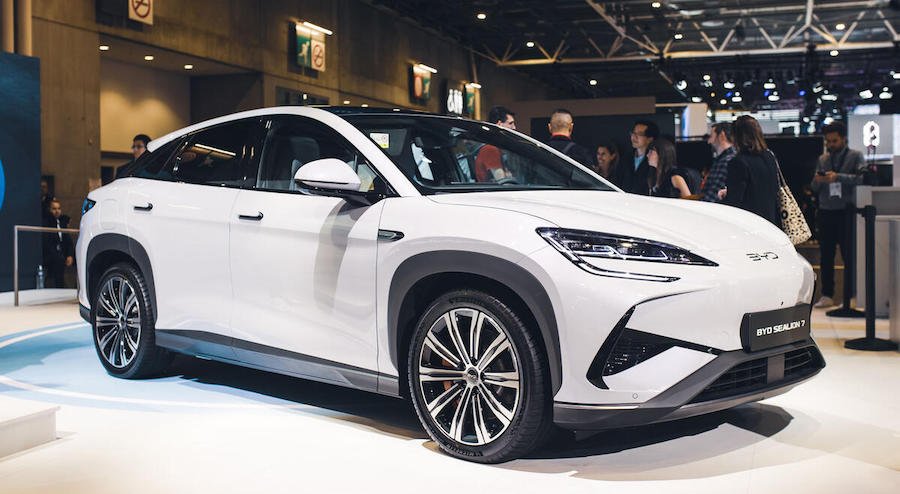BYD Sealion 7 Debuts In Europe As A Serious Tesla Model Y Competitor

BYD has its sights set on toppling the Tesla Model Y’s sales supremacy with the new Sealion 7, one of six new EVs that it plans to launch in Europe by the end of 2025. You can think of it as the more practical and spacious crossover alternative to the BYD Seal EV sedan that’s already available in many European markets.
The Sealion 7 is slightly lower and wider than the Model Y; it has a 1.6-inch (40 millimeters) longer wheelbase and is 3.2 inches (80 mm) longer overall. Its exterior design language is very similar to the Seal EV, looking more like a tall hatchback than a traditional SUV. The sloping roofline would place it into the same coupe SUV category as the Model Y, although it doesn’t taper toward the rear quite as dramatically as the Tesla.
Inside, it features a very similar design to the refreshed Seal sedan shown in China. It has a 15.6-inch central screen that rotates to offer landscape and portrait orientations, but unlike its rival from Tesla, it also has plenty of physical controls too.
The seats look better than the ones in the current Model Y (although the redesigned Model Y Juniper may have improved seats similar to the Model 3 Highland) thanks to quilted Nappa leather complimented by soft vegan leather that the manufacturer says covers 80% of the interior. One feature that the Sealion 7 has and the Model Y lacks is an electric cover for the full-length panoramic glass roof.
Power will be stored in one of two lithium iron phosphate (LFP) Blade batteries. The big battery has a gross capacity of 91.3 kilowatt-hours, of which around 82.5 kWh are usable and enough for 380 miles (610 kilometers) in China and 342 miles (550 km) on the slightly more accurate WLTP test cycle used in Europe. The Chinese market version is also available with a standard-range 71.8 kWh pack whose CLTC rating is 340 miles (550 km).
BYD hasn’t detailed the range of powertrains available in Europe, but the top version of the Sealion 7 sold elsewhere has a two-motor configuration with 523 horsepower and a 0 to 62 mph (100 km/h) time of 4.5 seconds. The top speed is 133 mph (214 km/h) and its motors can spin at up to 23,000 rpm.
Charging the big-battery Sealion 7 from 30 to 80% takes 25 minutes and its maximum DC fast charging power is 230 kW.
The manufacturer will bring additional powertrain configurations to Europe at a later time. This includes a base single-motor version, which is likely equipped with a standard-range battery. China will handle the initial production for Europe, but the company expects the Sealion 7 to be the first model to come out of its new production facility currently under construction in Hungary.
This will allow BYD to bypass the hefty import duties that the European Union will begin imposing on Chinese-made cars starting in November. It expects to start producing cars in Hungary by the end of 2025, so the first Sealion 7s sold in Europe (first deliveries are expected to commence this month) will incur a 17.1% tax on top of the 10% that BYD vehicles were already required to pay.
Related News
